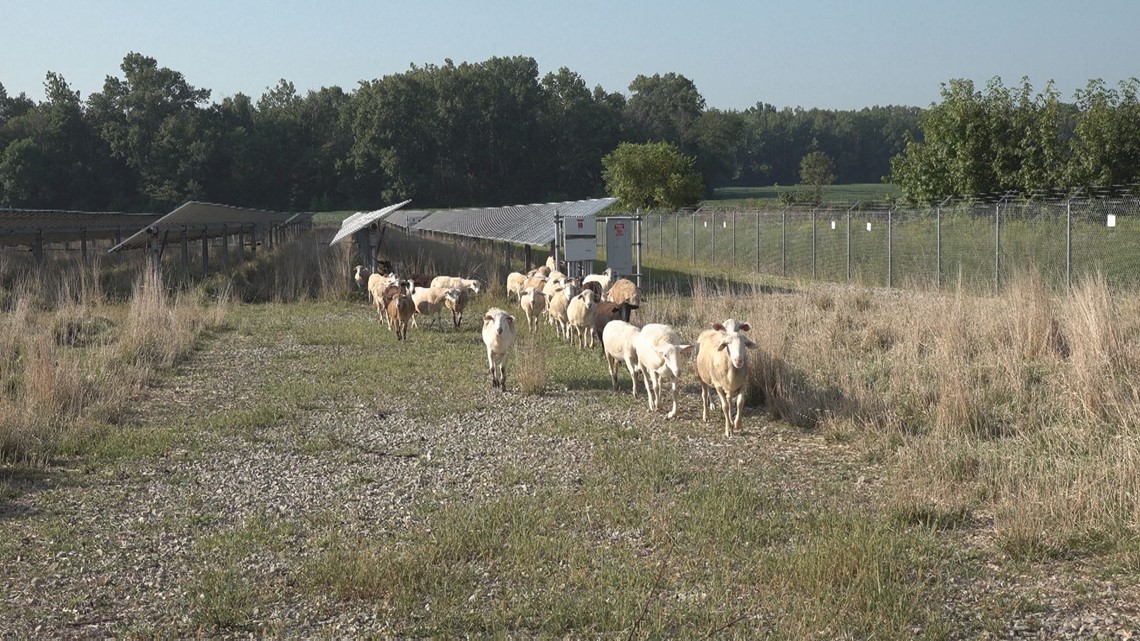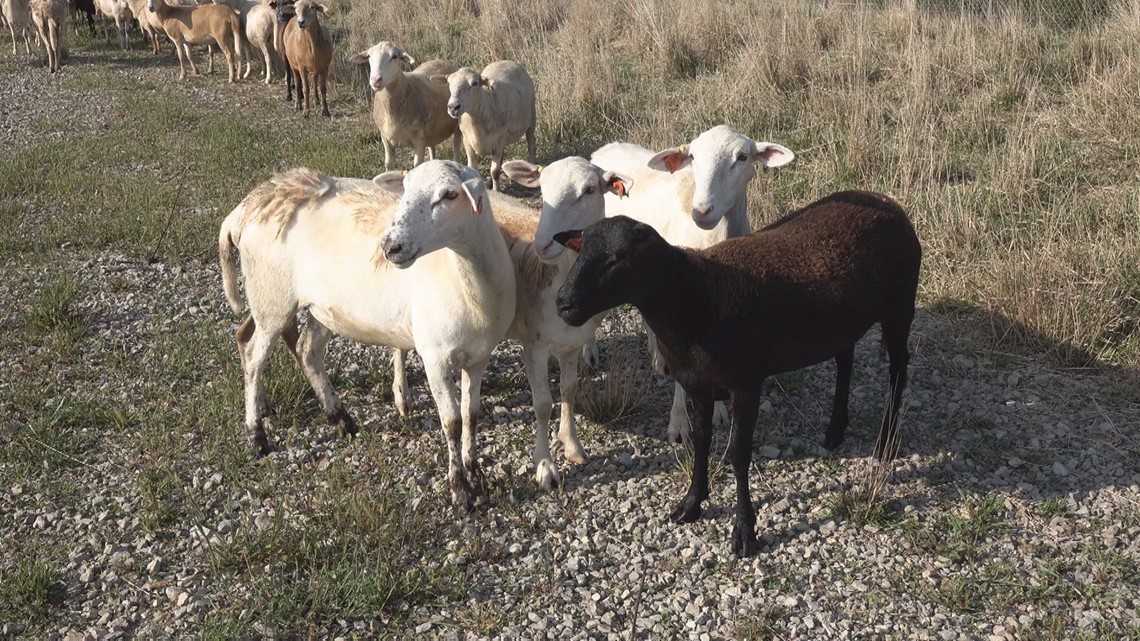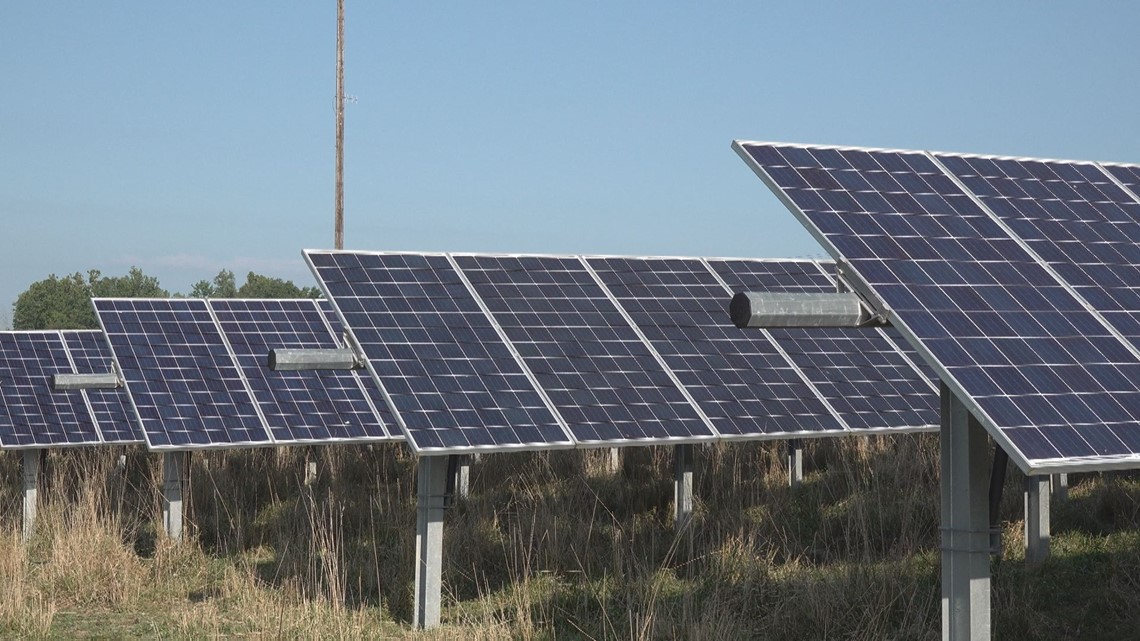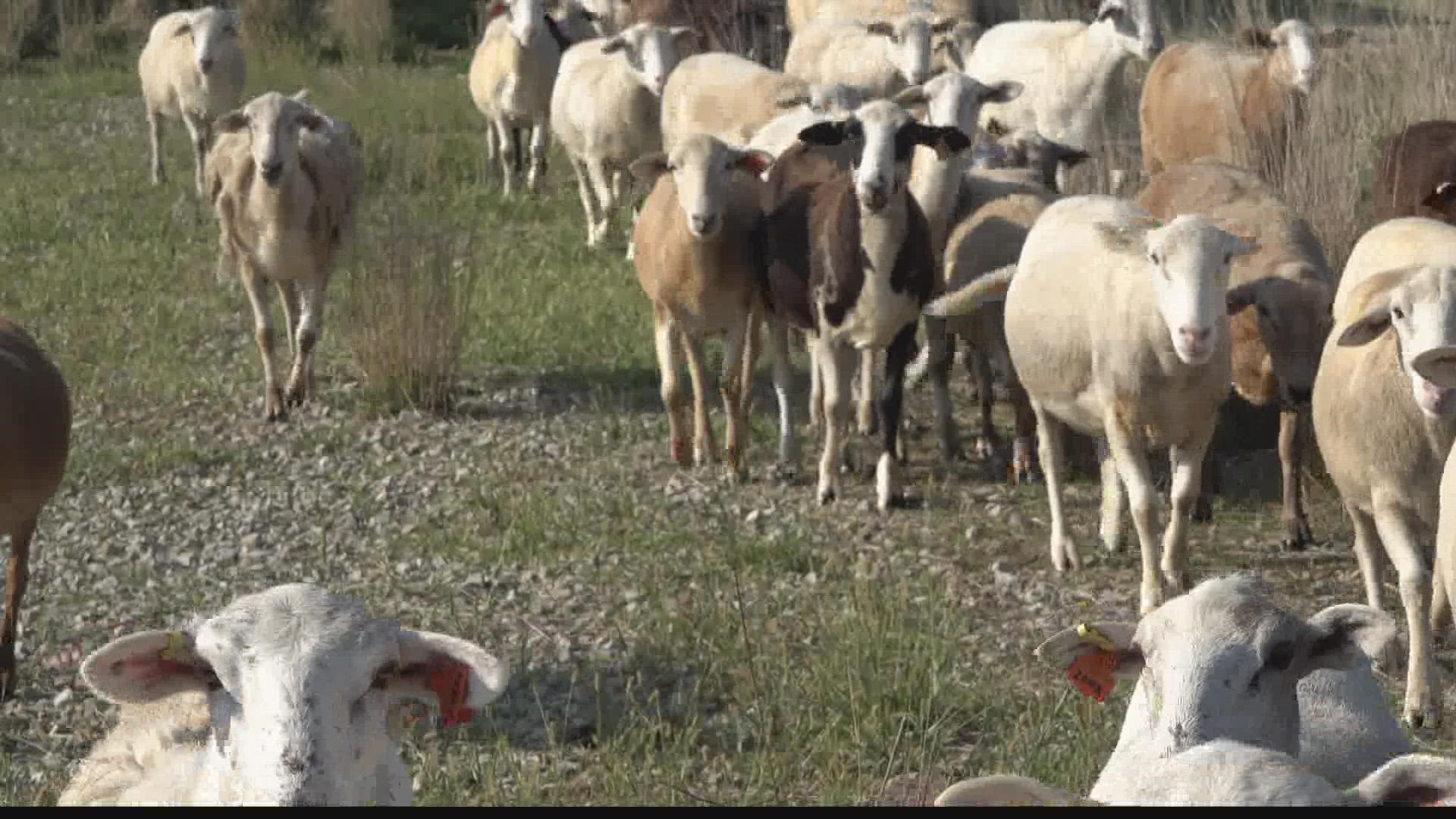INDIANAPOLIS — Farmers in south central Indiana are partnering with big business to create clean energy and, as an added bonus, their flocks are flourishing too.
John Cisney, a technical analyst at Hoosier Energy, explained how a sheep farm in Columbus, Indiana, is now also being used for solar power.
“We’re able to continue to use it as an agricultural value by partnering with a farmer on using sheep to graze the site, so it’s really good because we get ... more benefit than just solar. It’s actually an agricultural benefit to the community as well," said Cisney.


Curt Durnil, the communications coordinator at Hoosier Energy, explained how this partnership is truly a win-win situation— the farmer continues having their sheep graze on the same land, the only difference is that solar panels are now in the fields.
"We don’t have to have somebody come out here. The grass gets pretty high. Once we have the sheep out here, they do their job. We’re very satisfied, they have had three meals a day," said Durnil.


This is just one of the 10 Hoosier Energy solar array farms in southern Indiana.
“From Ellettsville to Greensburg from Scotland over to Newcastle, Greensburg back to Dale, Henryville, it’s a community of solar farms that harness energy from the sun and put that out to the customers," said Durnil.


Solar panels work together to produce an electric current— its 'going green' power.
“It’s sustainable. It’s renewable. There’s no CO2 emissions. So, it’s much better for the environment and it offsets the other energy sources, which haven’t been replaced," Durnil said.
Oil and gas can pollute the air. These large solar farms have advantages, too. While residential panels on your roof have fixed positions, these panels rotate and follow the sun.
“They start in the east in the morning and throughout the day, they follow the sun to the west, and what that allows us to do is ... [it] allows us to capture more energy from the sun, up to 15-20% more in a year’s time period than if they were just fixed facing the sun throughout the day," Cisney said.


This farm alone fuels 150 homes each year. It’s double use for the land you pass by on the interstate every day and now you know, beyond the grazing, there's also growing effort to protect our environment.
“It’s cleaner. There’s no CO2 emissions. It’s sustainable. It’s renewable," said Durnil.
Click here for more information.

